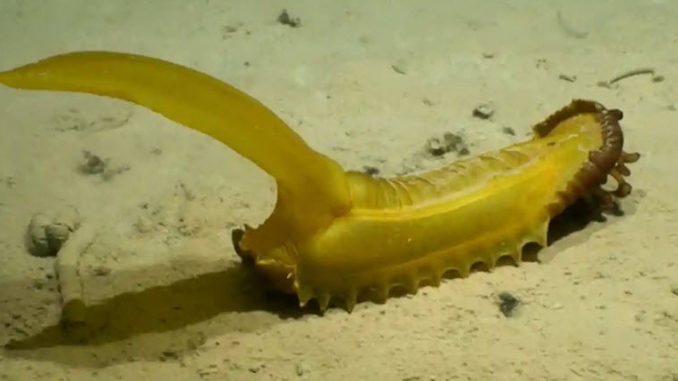
An astounding discovery was made recently as scientists revealed the identification of over 5,000 new species dwelling on the seabed in the Clarion-Clipperton Zone (CCZ), an untapped region of the Pacific Ocean. The CCZ, which stretches 1.7 million square miles between Hawaii and Mexico, is also projected to become a hotspot for deep-sea mining, making these discoveries crucial for understanding and protecting the biodiversity in the area.
The research conducted in the CCZ has revealed an astonishing array of creatures, most of which are new to science and almost exclusively endemic to the region. Among the most notable discoveries is the Bolosominae stet, a type of sponge previously unknown to science. Other noteworthy finds include a carnivorous sponge, a sea cucumber, and an intriguing creature nicknamed the “gummy squirrel” due to its sizable tail and gelatinous appearance.
The investigation into the CCZ’s marine biodiversity comes at a critical time as the area is rich in minerals such as cobalt, manganese, and nickel, which are highly sought after by the alternative energy sector. Seventeen deep-sea mining contractors have already been granted contracts for mining exploration in the CCZ, spanning 745,000 square miles. These contractors are supported by various countries including the UK, US, and China.
In light of these impending mining activities, the International Seabed Authority, which regulates deep-sea mining, will start accepting company exploitation applications in July.
The scientists who made this groundbreaking discovery have created the first-ever “CCZ checklist,” which compiles records of the species found in the region. This checklist, published in the journal Current Biology, includes a staggering 5,578 different species, with an estimated 88% to 92% of them being previously unknown.
The research team comprised international scientists who embarked on several expeditions to the CCZ. Using remote-controlled vehicles, they managed to traverse the ocean floor, which lies 4,000 to 6,000 meters below the surface, to study and collect specimens.
Muriel Rabone, the paper’s lead author and a deep-sea ecologist at the Natural History Museum, emphasized the importance of this discovery. “We share this planet with all this amazing biodiversity and we have a responsibility to understand it and protect it,” she said.
Dr. Adrian Glover, a deep-sea biologist who also participated in the study, acknowledged the potential risks of mining in this delicate ecosystem. He urged collaboration between scientists and mining companies to minimize the impact on the natural world.
Several prominent figures, including Sir David Attenborough, have called for a moratorium on deep-sea mining due to concerns over irreversible ecological damage.
Dr. Glover believes that the scientists’ role is to inform. “Our role as scientists is not to decide if it can go ahead – it is to provide the data,” he asserted. Glover sees potential in establishing a regulatory structure before mining begins, unlike other industries where regulations often trail behind.
As the world’s eyes turn toward the treasure trove of biodiversity in the CCZ, and with mining operations on the horizon, the dialogue surrounding the sustainable and responsible use of these resources is set to intensify.
